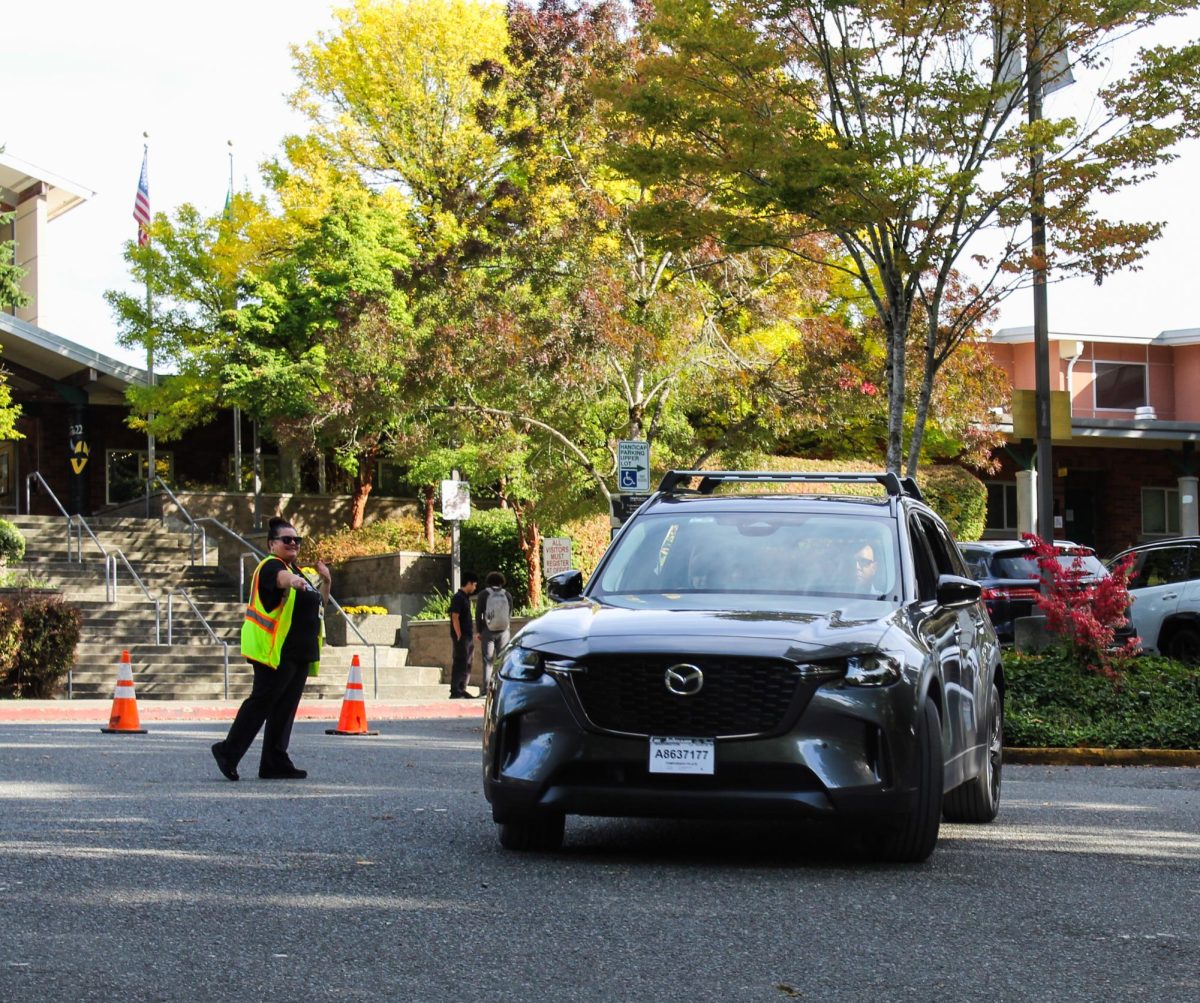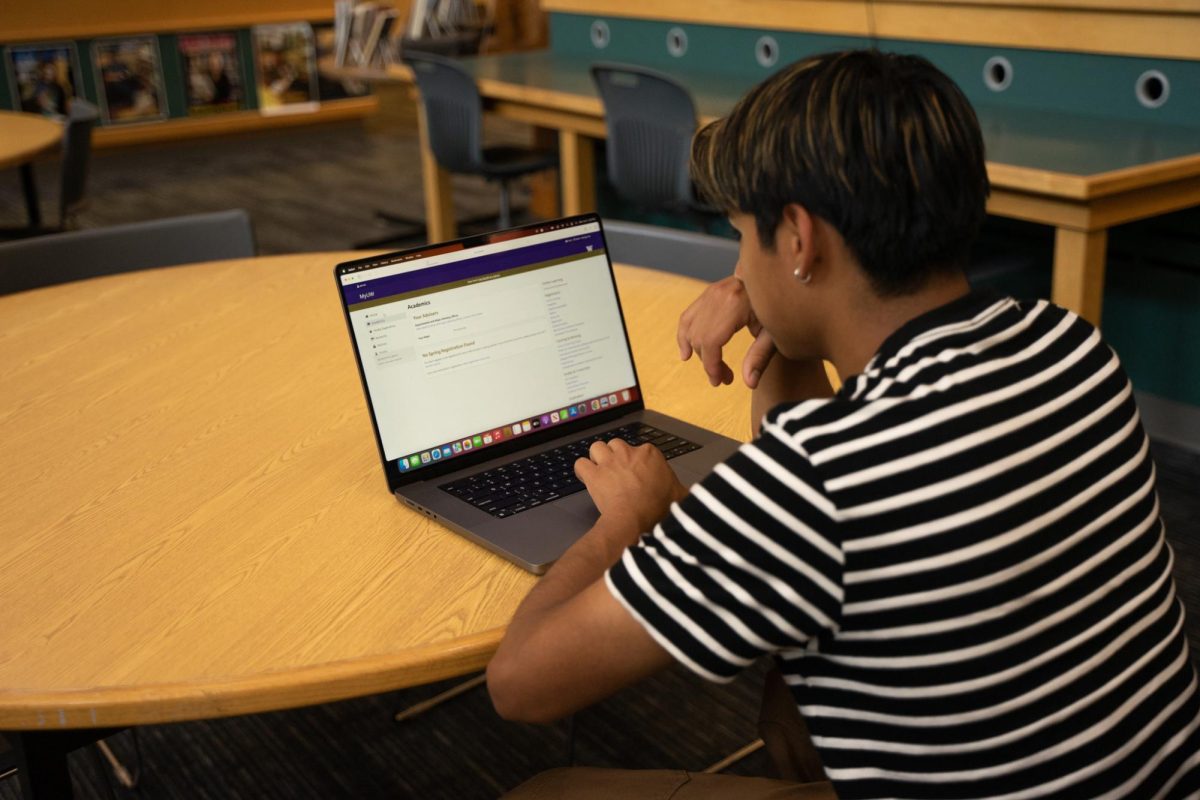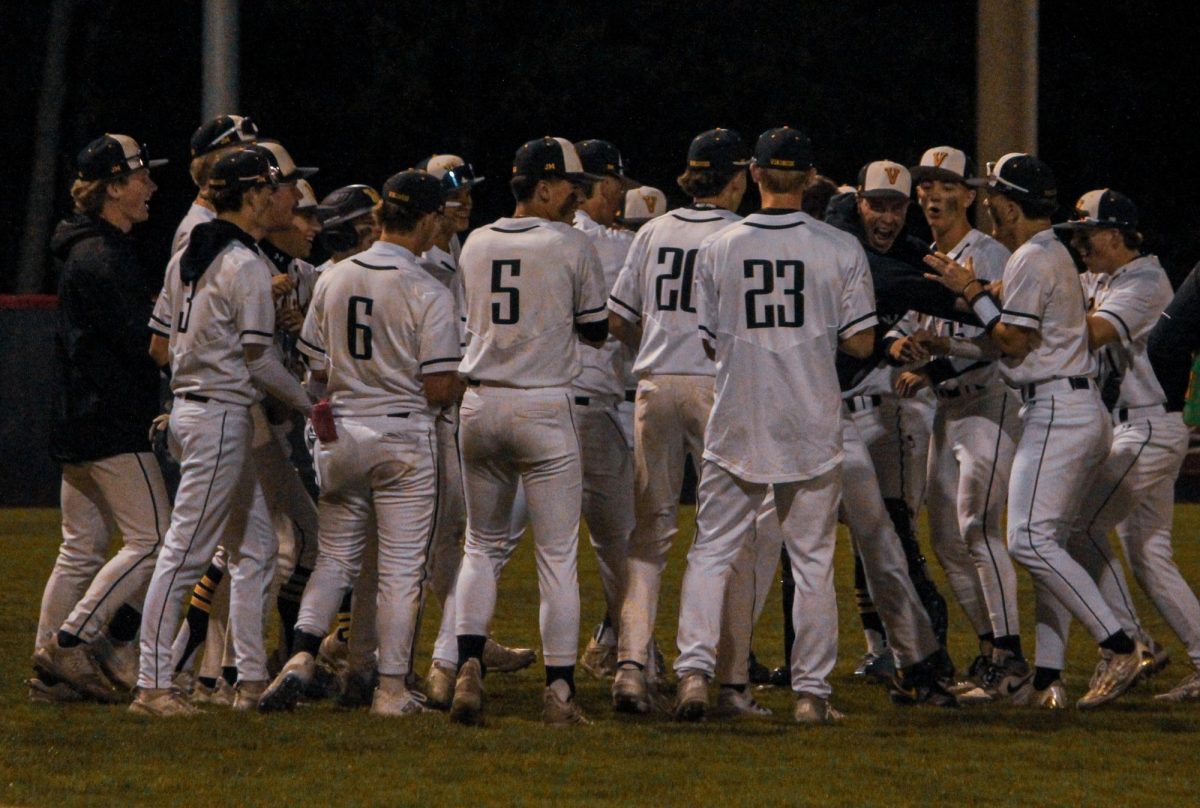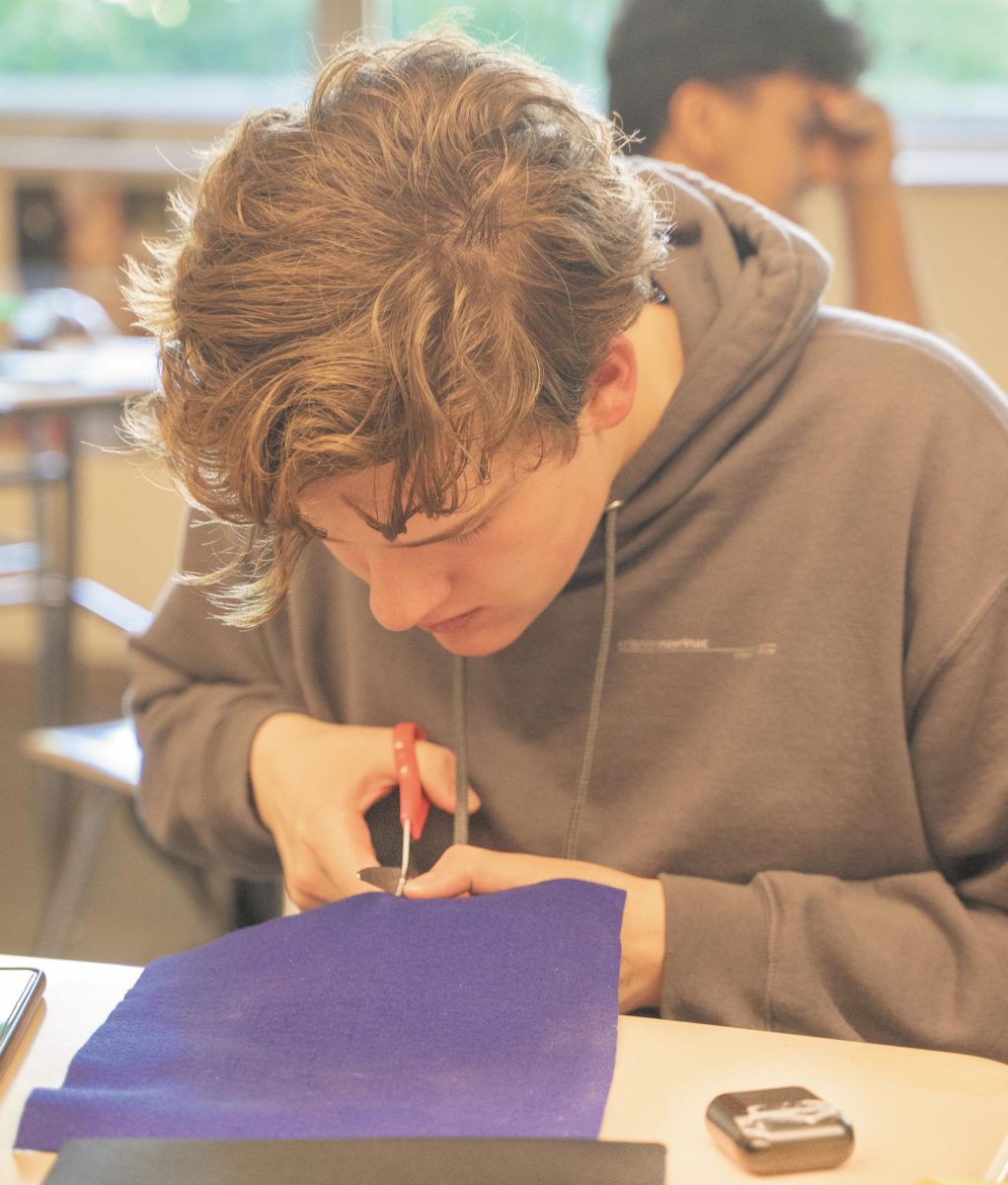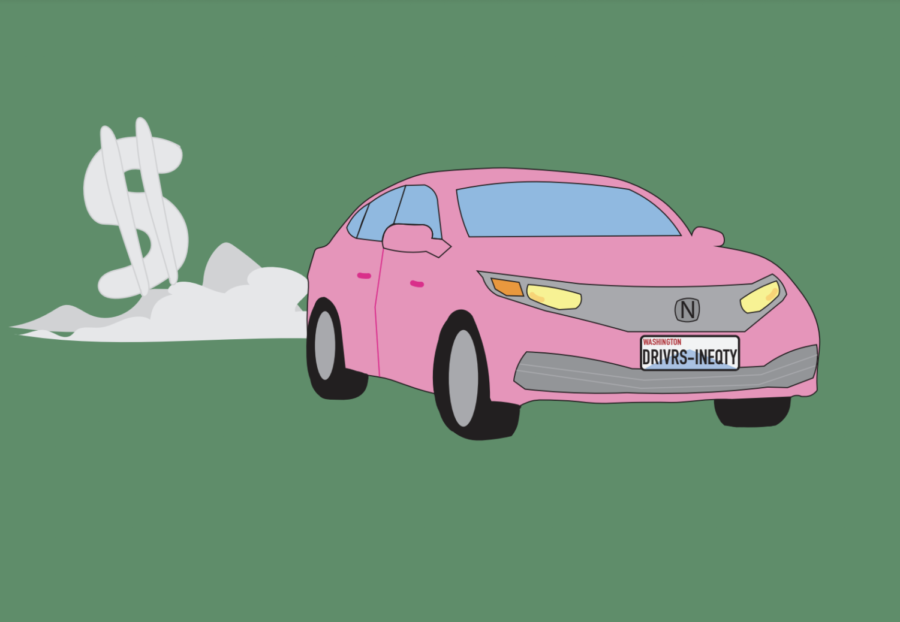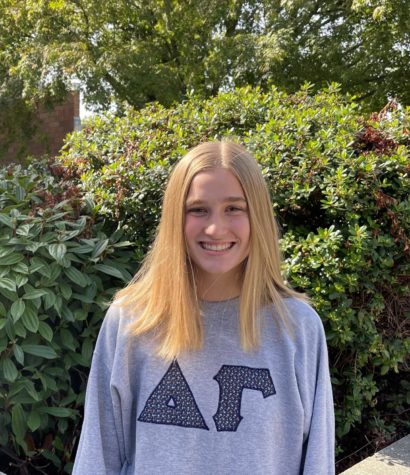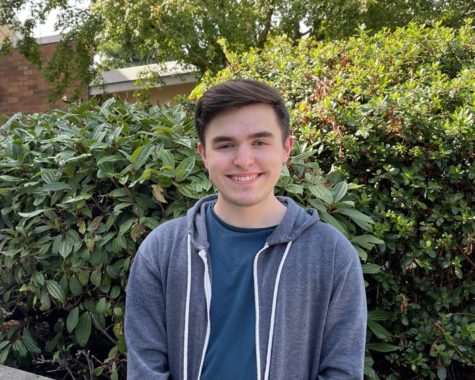Cars, Clothes & Community
“Everyone at our school is broke. They all wear the same freaking outfit. I literally saw this dude with two holes in his shirt, and it made me so upset,” said sophomore Jessie Clark*, who considers her family to be high income.
Freshman Natalie Dahl has an opposite perspective: “Some people can afford expensive brands and some people don’t even have enough clothes to get them through the week,” said Dahl.
These drastically different opinions by two students are reflective of what some consider a superiority complex—a deep belief that one’s abilities or accomplishments are significantly better than others—that some students with wealthier families have over low-income students. Nordic News spoke with 17 students of varying ages, races and socioeconomic backgrounds, and in those conversations, many repeatedly expressed that they feel those who come from privileged backgrounds but aren’t mindful about how they talk about their wealth are often “tone deaf and inconsiderate,” in the words of junior Avery Evans. According to many of the students, this comes in large part from a lack of awareness about the differences between their lives and those less economically fortunate. Social media has only exacerbated this problem, as it has become a platform where students can extravagantly display their material possessions.
“It makes me really annoyed because no one cares. And also why don’t you flex something good that you’ve done instead of your wealth. Maybe flex what you’ve done to get there,” said Evans. “When you flex how wealthy you are and then people that don’t have that kind of money see it when you post, you’re wanting to make someone feel bad. Why would you ever post something with the intention that you’re making a large group of people feel terrible?”
However, some students who show off their experience around wealth on social media have a different opinion.
“I think [showing off] is cool because if they worked hard for it, they should show it off because it gives motivation to people who want to achieve that, too. My picture showed that I’m just having fun with my life, so I just wanted to post it as a way to show it off,” said junior Bijan Namavar, who posted on Instagram a picture of him in front of a private charter jet that he took on a vacation with friends.
Namavar said that he feels that showing off on social media has a positive effect on students because it can inspire them to improve their lifestyle, and that being able to display wealth has changed his life for the better. He added that the wealth that paid for the jet is not his nor his parents, but that of his friends’ families. Through being friends with students with a surplus of wealth, he said he has learned how to act and behave to earn that friendship.
Freshman Cameron Arthur thinks becoming friends with those of similar economic backgrounds is not a coincidence or a conscious decision.
“[It] is not done on purpose, but there’s probably some kind of subconscious grouping that goes on because many of my friends come from a very similar economic level that I might be,” said Arthur.
Senior Aila Nakajima agrees that perspectives on wealth come down to the people you hang out with. Nakajima says she sees the negative consequences of this when students recklessly spend money on materialistic items that are not necessarily required in their life.
“If you hang out with a bunch of people that have a bunch of rich stuff and flaunt it, then you also want it to flaunt it as well, and it kind of goes into a bit of an endless cycle where you spend money on things that you probably don’t need,” said Nakajima.
Being surrounded by affluent friends who have high amounts of wealth also presents the misconception that the average median household income is lower than it is.
“I feel like at Inglemoor, since it’s in an area where there’s not the most wealth, people would want to fit in with the other nicer districts, so they would take pictures with expensive clothes…and I feel like that’s okay; if you want to do that, that’s your call, but I feel like you should use other people’s flexing as a way to motivate yourself to achieve more than them. I feel like once you actually achieve it, you don’t care about showing it off. I just flex because I just like the pictures—they’re just fire pictures,” said Namavar.
In actuality, the median household income in Kenmore is $109,810 versus the Washington State median of $77,006 and the national median of $62,843.
Since Kenmore is a high income area, many families have the ability to purchase expensive cars for their children. Several students Nordic spoke with agreed that the parking lot is a highly talked about part of the campus in terms of conversations about wealth. Although some students are not purposely displaying their family’s wealth with the cars they drive, students often make observations and assumptions based on the brand of the car. Some interviewed felt that an expensive car correlates with greater wealth. Serena Meng, a 2011 Inglemoor alumna, said she passes through the parking lot daily on her way to pick up her younger sibling and also noticed that the parking lot has many expensive cars.
“I thought that it gives a false representation of where a student should be in life. It is great that certain families can provide that kind of luxury vehicle for their child, but it also sets the expectations high. There is value in learning how to start from the bottom and work your way up,” said Meng.
Students can drive more expensive cars for several different reasons. Whether it is because their parents chose and purchased their car for them, the car is a hand-me-down from the parent, the student simply wanted to purchase the car and is slowly paying off the loans with their own money or otherwise, teens who drive expensive cars in a high school parking lot are going to be associated with wealth. Although some students own expensive cars to show off to their peers, others think it affects their relationships with peers negatively.
“There are some parents who don’t let their kids drive anything but a Tesla because it’s safer to drive a Tesla because it’s self-driving,” said junior Priyanka Kannan. “I think a lot of people’s cars are less their choice than their parents. And I know [my friend] feels really embarrassed about the Tesla because it’s different and people obviously are going to talk about it.”
But the privilege in having that choice—the financial ability as a family to require your child to drive an expensive car—is one that requires a level of financial privilege.
Whether purposefully or not, the way students display wealth around school impacts the community around them. In cars, clothes and social media, wealth disparities are noticeable, and depending on students’ socioeconomic backgrounds, their opinions can vary significantly.
“The emphasis that some students have on brands of clothing and expensive products as a status symbol can make them seem to be arrogant, and I am deeply uncomfortable around people like that,” said junior Trisha Agrawal. “As for social media, if I were to come across someone flaunting their wealth, I would probably assume they are self-obsessed and materialistic, and would not want to be around that person.”
Academic Advantages
Family income and wealth can impact cars, clothes and interactions with other students, but it can also be deeply influential in which academic opportunities are accessible to students. Not only does money affect how much a student’s family can spend on extra resources like SAT prep courses or college counselors, but it also affects students’ approaches to schoolwork or class selection.
“Certainly, what I heard before I came to Inglemoor as a teacher was that you could walk down the outside hallways and look into classrooms and tell just by looking into the classroom what type of class it was. If there were students that were more like white or Asian ethnicities, and look to be more affluent socioeconomically, that it was probably one of the IB classes,” said AP history teacher Jason Metcalf-Lindenburger.
Part of this problem was explored in the February Nordic News article “Diversity disparity: the low Hispanic/ Latino enrollment in advanced courses,” which found that even though Asian and Latino students made up an approximately even percentage of 12th grade students, just 5.7% of Latino seniors were enrolled in IB English 12 versus 37.7% of Asian seniors. And while not all Latino students come from low-income backgrounds, and not all Asian and white students come from low-income backgrounds, the academic achievement gap is attributable in part to historical financial disparities.
Low-income students often have to overcome more challenges outside of school, which can affect academics more than
those who come from wealthier backgrounds. Principal Adam Desautels said that it is harder for low-income students to meet the demands of the schoolwork needed to be successful in advanced classes.
“When you take an AP or an IB class, you talk about the amount of outside schoolwork that it takes to be successful and that it is really hard to meet all of those demands. If you’re caring for siblings or you’re working to help your family pay their bills,” said Desautels.
Although Desautels does not want to deter any students from pursuing IB courses, the reality is that the IB course load is high and expensive. IB student junior Hannah Miller* said she feels that the IB program is extremely expensive.
“The tests by themselves cost a few hundred and you’re expected to take at least six or seven to be eligible for the IB program. And then you have to pay outside of school if you want to do good on them. Like for math test prep, a new textbook could cost 40 dollars or more than that, over 100 dollars If you want to study for those,” said Miller. “I see more people that are better off in IB. It’s more seen because they have the money and because IB takes a lot of your time. Lots of people with out-of-school situations don’t get that time to spend on IB classes.”
Although students from low income families can struggle when it comes to spending on academics, resources are available. Inglemoor can provide computers, books and financial support for IB and AP tests. Unfortunately, the students who need these resources don’t always know they exist. And even those who do may not be comfortable asking for them. IB English teacher Joanna Walker pointed out that not every student who needs financial assistance is able to reach out for it.
“If students have to ask for help, there’s going to be a small group of students that feel confident in advocating for themselves and asking for that help, but there’s so many students that won’t ask, whether they don’t know about it, or they’re embarrassed to ask or parents don’t want them to ask,” said Walker. “There’s so many reasons that students can’t access that.”
Many students of many economic backgrounds also have to worry about affording higher education. Walker says that she worries for her students, especially when money is what keeps them from fulfilling their dreams of going to college.
“It comes down to, ‘well I got in there and I got in there, but I’m going to U DUB because I can’t figure out how to finance it. So there’s always a little bit of a letdown because for some students that’s a big goal,” said Walker. “There’s so many students that have that dream of, well, ‘I want to go live in the East. I want to experience snowy winters in Chicago or whatever it is.’”
Agrawal expressed similar sentiments about how finances greatly impact the college decision and connected it to family financial situations.
“It’s unfortunate to realize that even if you somehow get the one in a million chance to get into a really good school, it’s probably not possible because financial aid and scholarships might not be enough, and it’s not affordable unless you take student loans and suffer the consequences from that.”
School Support
Although schools do not have the power alone to change national economic policies or the taxation system, they do have some resources to respond to students’ economic situations. Aside from academic support, students have access to a variety of resources and support programs through the district.
“We have three pantries that students can come in and get food or teachers can take the food in their classrooms and hand them out when they need to,” said Desautels. “We also have a food pantry that’s been provided for families.”
Desautels said he thinks Inglemoor has done a good job of finding ways to support low-income students. Although COVID-19 sent students home last year, Inglemoor delivered and provided free lunch to students and families during hybrid and online school. Additionally, there is a fund to pay for things such as yearbooks and prom for students, so that all students can participate fully in non-academic aspects of the high school experience.
“We also have a care team that Devin Blanchard is the lead of over in our counseling office,” said Desautels. “When we find out about a need that a student or their family has, whether it’s financial need or the ability to do something here at school, it could be taking care of a need like a bill so that a family can afford more groceries or it could be getting gift cards for groceries, different things like that—like transportation, all of that is covered by our care team,” said Desautels. “And so when they talk about the needs that are there and then they allocate the funds for it, it even goes as far as clothing and gifts.”
Desautels said that there is still more work to be done because there are always more things that schools can do to support students.
“What we need to do a better job is making sure that those families — the families that need what we’re providing, know how we can get to them and can communicate with us as discreetly as possible, so there’s not that stigma,” said Desautels.
Confidentiality requirements vary from state to state, but in Washington, disclosure of which students are part of programs that provide economic help to low-income families is highly confidential and may only be released to persons directly connected with the administration of the program and with a legitimate reason to know. This is designed to protect the privacy of those students and families.
Metcalf-Lindenburger said that when he taught in Texas, teachers were given a list of which students qualified for free and reduced lunch, which are those who come from families that earn between 130% and 185% of the federal poverty level. He also noted that there are some limitations for teachers which accompany that confidentiality.
“What do I do as a teacher to help low income students? How do I know who they are? And so I don’t, in many cases, know who they are. So, what could I do about it since I don’t even know which students we’re talking about?” said Metcalf-Lindenburger. “And I actually kind of liked knowing that information. It would allow me to give a little extra help to maybe students that needed a little extra help; I wouldn’t have realized that. But here I have no idea who the low-income students are.”
Desautels said although there are costs associated with doing extra activities like clubs and sports, they can usually be waived for students who qualify for free and reduced lunch. He said that as soon as charges like these are made to a student’s account, they are essentially wiped away. But he added that not every family knows about those opportunities, and that there are families who do not qualify but still need financial support. It can therefore be a challenge to support all students.
“When I was in school, I was on free and reduced lunch. There were activities that I didn’t do because I didn’t want to tell people that I couldn’t afford it,” said Desautels.
Desautels said that ultimately he would love to make it so that families would not have to tell the school. Changing to free lunches for all students was one way to make sure that students would not need to tell the school to get lunch waved this school year.
Additionally, Desautels noted that students’ economic status can impact if they join clubs with more costs associated with them, like travel. He said that it feels “awful” when students choose not to do activities because they can’t afford it. The district has made a commitment to provide financial aid for all school-related activities and travels for students enrolled in free and reduced lunch, which is a massive benefit that allows students to not have to worry about going on school field trips that require airfare or other expensive costs.
“I think we do as much as we know to do so far to eliminate barriers, but as we learn more we’ll do more,” said Desautels.







